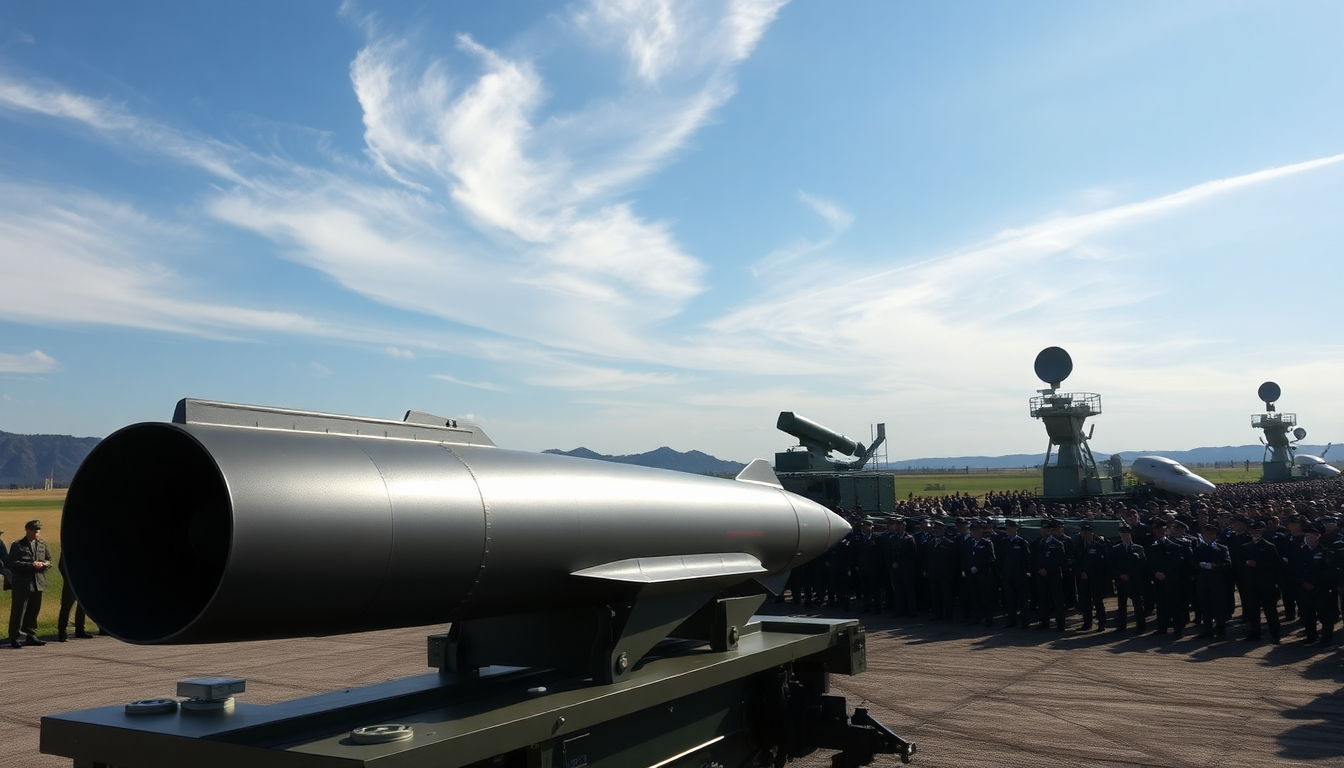Table of Contents
Hypersonic technology is shaking up the world of modern warfare in a big way. As countries race to establish military dominance, the spotlight is on innovative missile systems, especially those showcased in recent military parades. Take China’s unveiling of various anti-ship missiles, like the YJ-19, for example.
This reveals just how quickly aerospace capabilities are evolving and highlights the strategic importance of hypersonic flight.
What Makes the YJ-19 a Game Changer for China?
At a recent commemorative parade, all eyes were on the YJ-19, a missile that perfectly illustrates China’s dedication to advancing its military technology.
With its distinct air inlet, this missile is rumored to be powered by a scramjet engine, which allows it to use atmospheric oxygen for combustion during high-speed flight. This means it not only has a greater operational range but also can reach impressive speeds, making it harder for traditional defense systems to keep up.
In a world where military might is increasingly defined by cutting-edge technology, the YJ-19’s performance during the parade showcased China’s ability to conduct integrated military operations. The simultaneous display of various missile systems, including the YJ-15, YJ-17, and YJ-20, signals a strategic pivot toward a more modern and agile military force, ready for rapid responses and effective deterrence.
What Are the Challenges of Reliable Hypersonic Flight?
While hypersonic missiles like the YJ-19 are impressive, achieving reliable hypersonic flight is no walk in the park. There are primarily two approaches being tested to hit those high-speed benchmarks.
The first involves a predictable trajectory during the missile’s ascent, but things can get tricky during the gliding phase. This means that while the missile performs well at launch, it might lose effectiveness as it nears its target.
The second approach, which the YJ-19 embodies, emphasizes maintaining speed and maneuverability throughout the entire flight.
This adaptability is crucial; it allows the missile to respond to countermeasures and evade interception, making it a powerful asset in aerial combat. The design and capabilities of the YJ-19 reflect a growing trend in military technology where adaptability and performance take center stage.
What’s Next for Hypersonic Technology in Military Strategy?
As countries ramp up their investments in hypersonic technology, the implications for global military strategy become increasingly significant. Missiles that can zoom past Mach 5 present both challenges and opportunities for military planners everywhere. Just think about it: the traditional calculus of deterrence might shift dramatically as nations contend with hypersonic systems that could potentially outsmart current missile defense systems.
Looking ahead, it’s clear that hypersonic technology is set to revolutionize military engagements and reshape geopolitical dynamics. Nations that can effectively leverage these capabilities stand to gain substantial advantages in both defense and offensive operations. This means that the focus on research and development in this field will likely accelerate, leading to even more innovations and a complete rethinking of classic warfare strategies. Isn’t it fascinating to think about how this technology could change the game in the years to come?





